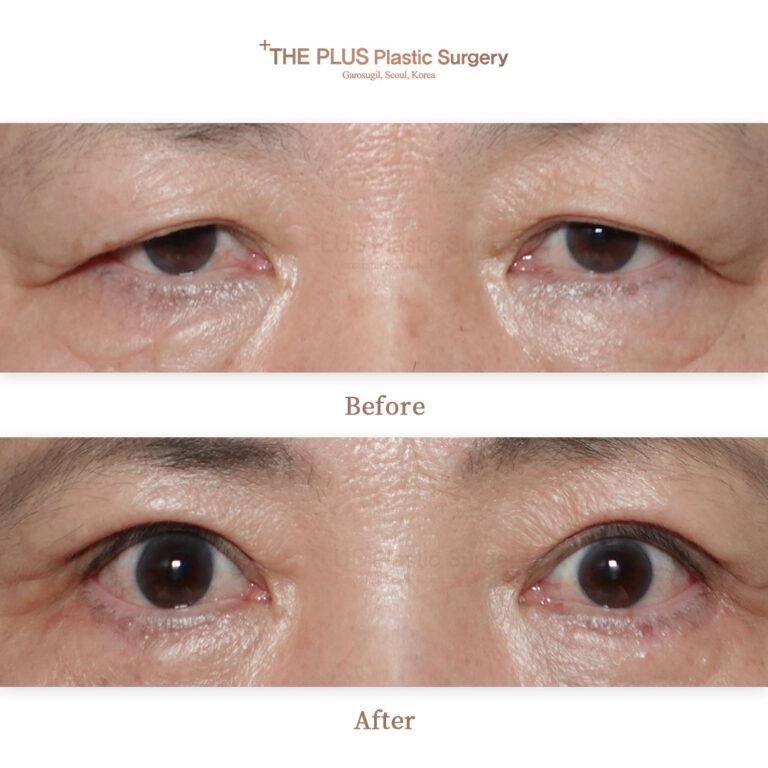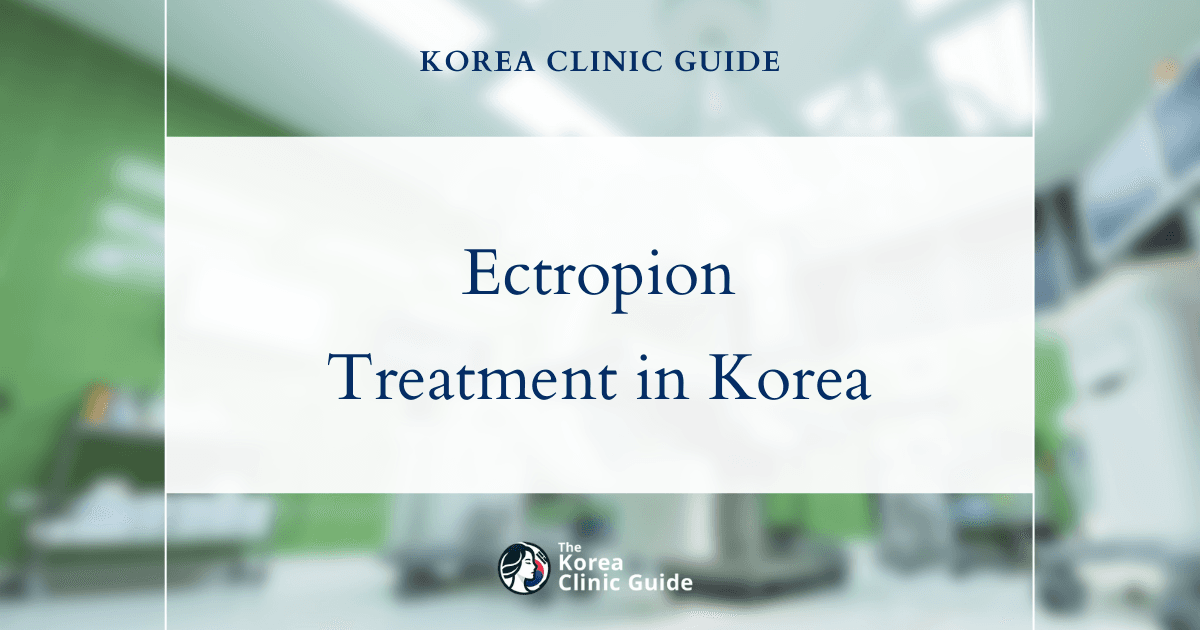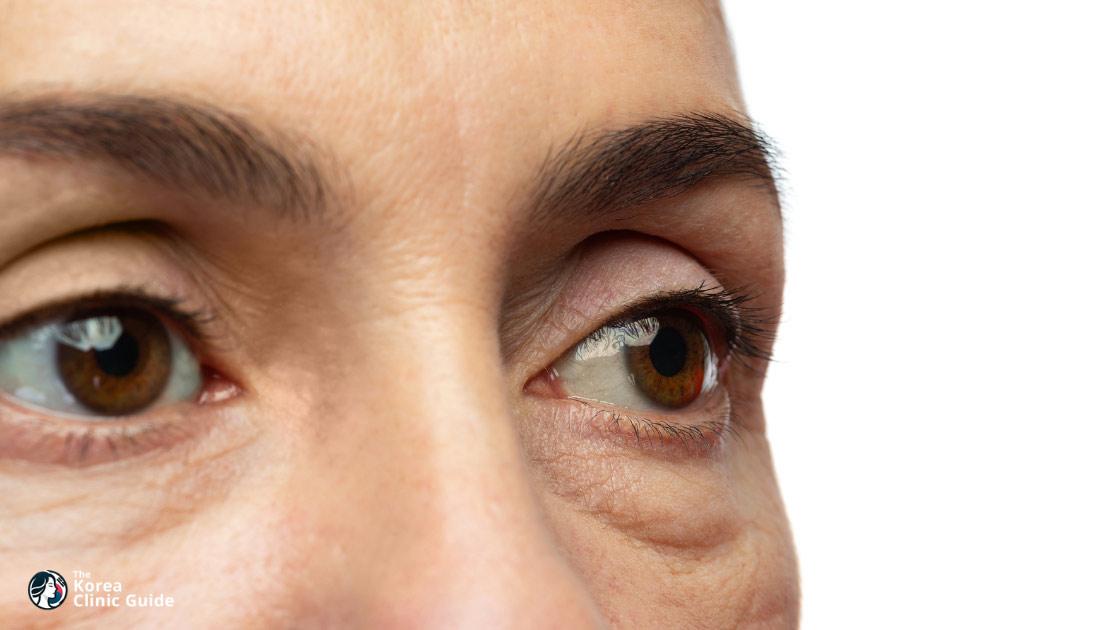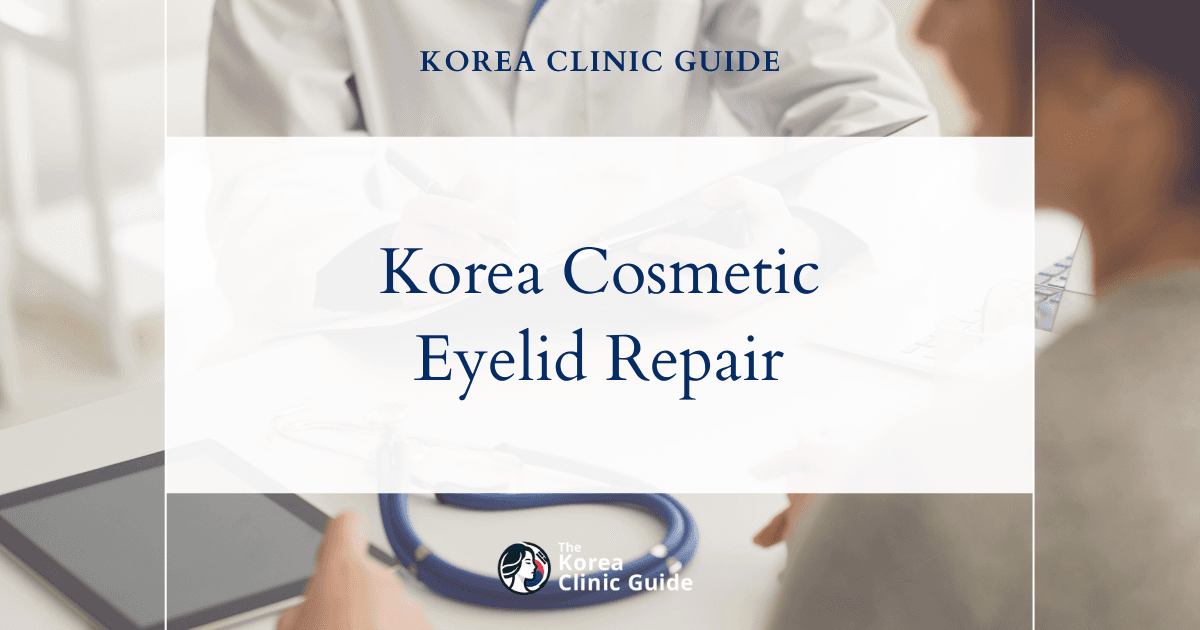Medical Tourism Blog
Effective Congenital Ptosis Treatment in Korea: Ptosis Correction Procedures for Restoring Vision

Table of contents
- Ptosis Correction: Detailed Medical Procedures
- Best Clinics in Korea for Congenital Ptosis
- Navigating Ptosis Correction in South Korea: A Medical Tourist's Guide
- Financial Considerations: Costs of Ptosis Correction in South Korea vs. Other Countries
- Patient Journeys: Addressing Issues Through Ptosis Correction
- Conclusions
- References
Congenital ptosis, often described as "droopy eyelids present at birth," is a condition where the upper eyelid abnormally droops. It can affect one eye (unilateral) or both eyes (bilateral) and is usually noticed at birth or within the first year. Doctors diagnose ptosis when the upper eyelid sits more than 0.5-1.0mm below the superior limbus—the border between the cornea and sclera. In severe cases, the eyelid may partially or fully cover the pupil, blocking vision.
When searching online, patients might find different terms for this condition, such as "blepharoptosis," "drooping eyelids," or "hooded eyelids." The phrase "lazy eyelid" is also used informally, especially in discussions about surgery. Knowing these alternative names helps patients better navigate information and communicate with healthcare providers.
Table 1: Common Pseudonyms for "Congenital Ptosis"
| Term | Description |
|---|---|
| Blepharoptosis | The formal medical term for a drooping eyelid |
Causes and Associated Conditions
The main cause of congenital ptosis is a problem with the levator palpebrae superioris muscle, which lifts the eyelid. In most cases, this muscle is dystrophic—its normal fibers are replaced by fat and fibrous tissue. This change weakens the muscle’s ability to move the eyelid properly, leading to the droop. Because of this, the condition is often called congenital myogenic ptosis.
The muscle’s condition directly affects eyelid function and guides the choice of surgery. For example, patients with strong levator muscle function usually undergo external or internal surgical approaches. Those with poor muscle function often need frontalis sling fixation. In severe cases where little muscle remains, levator resection carries a higher risk of incomplete eye closure after surgery. Thus, understanding the muscle’s state is crucial for predicting outcomes and planning treatment. A thorough evaluation of levator function is a key step in managing congenital ptosis.
While congenital ptosis often occurs alone, it can also appear with other eye or systemic conditions like eye movement disorders, strabismus (crossed eyes), astigmatism, or eyelid tumors. It may be part of syndromes such as Blepharophimosis, ptosis, and epicanthus inversus (BPEI) syndrome, Duane Retraction syndrome, congenital fibrosis of the extraocular muscles, Marcus-Gunn jaw-winking syndrome, or congenital Horner's syndrome. Knowing these associations helps ensure a complete diagnosis and treatment plan.
Impact on Vision and Development
A drooping eyelid can block vision, especially if it covers the pupil, which is a serious concern for children whose vision is still developing. If vision is obstructed, amblyopia ("lazy eye") can develop because the brain favors the better-seeing eye, causing the affected eye’s vision to weaken. Early diagnosis and treatment are essential to prevent this.
Beyond vision, congenital ptosis can cause physical and psychosocial challenges. Children may tilt their heads back, lift their chins, or raise their eyebrows to see better, which can lead to neck and head problems over time. Even without amblyopia, surgery is often recommended to avoid social and psychological difficulties later. The goal of surgery, especially in children, is to restore normal eyelid height to support both visual and social development. This broadens the view of congenital ptosis from a simple eye issue to a complex developmental concern.
A full diagnostic workup for children with ptosis includes measuring visual acuity and refractive error, checking for strabismus, and performing a dilated fundus exam. Lid height and levator function are measured, and Bell's phenomenon (eye movement when closing eyelids) is assessed to evaluate risks after surgery. A detailed history, including onset, progression, and family background, also informs treatment.
Ptosis Correction: Detailed Medical Procedures
Overview of Surgical Goals and Considerations
Ptosis surgery aims to improve vision by lifting the eyelid, restore normal eyelid function, and create a more balanced, attractive appearance. For children, supporting visual and social development by normalizing eyelid height is especially important. The strength of the levator muscle is the main factor guiding which surgical technique is chosen, so careful testing of this muscle is done before surgery.
Timing is critical. If ptosis severely blocks vision or risks amblyopia, surgery should happen early. For milder cases without vision risk, surgery is often delayed until the child is 3 to 5 years old. This allows facial growth and better cooperation during preoperative assessments, improving surgical precision.
Common Surgical Techniques for Ptosis Correction
Choosing the right surgical method depends on levator muscle function and ptosis severity. This personalized approach affects how invasive the surgery is, the anesthesia used, and recovery. Patients should understand that their procedure is tailored to their condition, with different techniques having unique recovery and risks.
External Approach (Levator Advancement or Resection)
The external approach, or levator advancement/resection, is the most common surgery for patients with good levator muscle function. The surgeon makes an incision in the eyelid crease to access the levator muscle, which is then tightened or shortened and attached to the tarsus to improve lifting. Excess skin may be removed, and the incision is closed to form a natural eyelid crease, leaving a well-hidden scar.
Adults usually have this done under sedation, allowing them to cooperate during surgery for better symmetry. Children typically require general anesthesia.
Internal Approach (Müller's Muscle-Conjunctival Resection - MMCR)
The internal approach involves flipping the eyelid inside out to shorten muscles from within, avoiding external scars. It targets Müller's muscle for mild elevation or the levator muscle for more lift. The Fasanella-Servat procedure is a related technique removing tarsoconjunctival tissue, Müller's muscle, and part of the levator.
This method suits mild to moderate ptosis with good levator function and a positive phenylephrine test, indicating Müller's muscle responsiveness. It requires general anesthesia or sedation and offers the advantage of no visible scars.
Frontalis Sling Fixation
Frontalis sling fixation is for severe ptosis with poor or absent levator function, common in congenital cases. The eyelid is connected to the frontalis muscle above the eyebrow using a sling, so raising the eyebrows lifts the eyelid.
Autogenous fascia lata (tissue from the patient’s thigh) is preferred for children over 3 years due to better outcomes and lower recurrence. Synthetic sutures may be used temporarily in very young children but have higher failure rates. This surgery is done under general anesthesia.
A common temporary side effect is incomplete eye closure for 2-3 months, requiring diligent eye lubrication to prevent dryness, infection, or irritation.
Table 2: Overview of Ptosis Correction Surgical Techniques
| Technique Name | Primary Indication (Levator Function) | Approach | Typical Anesthesia | Key Characteristics | Common Side Effects/Considerations |
|---|---|---|---|---|---|
| External Approach (Levator Advancement/Resection) | Strong/Good | External Incision (Eyelid Crease) | Sedation (Adults)/General (Children) | Most common, hidden scar, intraoperative adjustment possible (adults) | Swelling, bruising, temporary dry eyes |
| Internal Approach (Müller's Muscle-Conjunctival Resection - MMCR) | Mild-Moderate/Good | Internal (No External Scar) | General/Sedation | No external scar, less invasive | Swelling, bruising, temporary dry eyes |
| Frontalis Sling Fixation | Poor/Absent | Sling (Forehead Muscle) | General | Uses forehead muscle, temporary inability to close eye common | Temporary inability to close eye, requires lubrication |
What to Expect During and Immediately After Surgery (General)
Ptosis surgeries may use local anesthesia with sedation or general anesthesia, depending on the technique, patient age, and cooperation. Most are outpatient procedures lasting 30 minutes to two hours.
Right after surgery, patients might have blurred vision from ointments, watery eyes, light sensitivity, double vision, puffy or numb eyelids, swelling, and bruising. Some discomfort is normal.
Post-op care includes avoiding strenuous activity and eye rubbing for about a week. Bandages are usually unnecessary. Because the eyelid is lifted, more of the eye surface is exposed, increasing dryness risk, especially after frontalis sling surgery. The eyelid may also be inflamed and temporarily unable to close fully. Doctors recommend eye drops and ointments to keep the eye moist and prevent infection. Patients should seek immediate care if they experience severe pain, bleeding, vision loss, or other serious symptoms.
Delaying surgery until age 3-5 is not just about facial growth but also about ensuring the child can cooperate during evaluations and, if possible, surgery. Adults can adjust eyelid height during surgery by responding to the surgeon, but young children under general anesthesia cannot, leading to a 15-20% chance of needing adjustments later. This balance between early intervention and surgical precision is key to successful outcomes.
Best Clinics in Korea for Congenital Ptosis
Listed below are the best clinics in Korea for congenital ptosis:
| Clinic Name | Key Features | Special Techniques |
|---|---|---|
| THEPLUS Plastic Surgery | World-class team of surgeons (Dr. Kim, Dr. Jeong, Dr. Lee); Academic and clinical excellence; Fully personalized care from in-depth consultation to post-operative skin management; Commitment to patient safety and satisfaction; Ongoing global research and education involvement; Excellence in facial harmony and natural results. | Advanced 3D implant research; Holistic approach to facial contouring and rhinoplasty; Integration of function and aesthetics; Specialized in congenital ptosis correction and advanced cosmetic procedures. |
| Made Young Plastic Surgery | Renowned for congenital ptosis correction in eyes; Led by Dr. Park Byung-Chan (15+ years of specialized experience); Patient-centered, highly customized procedures; Direct specialist consultation; Accolades: 2022 Korea No.1 Award, Outstanding Member of Korean Society of Plastic and Reconstructive Surgeons; Comprehensive safety and aftercare (1:1 monitoring, board-certified anesthesiologists, CCTV, aftercare center); Focus on natural beauty with visible same-day results. | Fully customized eyelid correction (incision line, thickness, double eyelid height); Premium anti-aging and eye surgery; Patient-tailored treatment planning and advanced aftercare. |
| Okay Plastic Surgery Clinic | Holistic, patient-centered approach; Distinguished female plastic surgeon with renowned expertise; Advanced surgical/non-surgical eye treatments; Guidance, empathy, and individualized treatment throughout patient journey; Personalized solutions for complex/rare cases; Expertise in both aesthetic and reconstructive revision surgeries. | State-of-the-art surgical and non-surgical techniques for eye correction; Specialized revision surgery; Comprehensive care for congenital ptosis and aesthetic eye procedures. |
THEPLUS Plastic Surgery
THEPLUS Plastic Surgery in Garosu-gil, Gangnam, stands out as Korea’s premier clinic for the correction of congenital ptosis due to its world-class team of surgeons, cutting-edge techniques, and holistic approach to facial harmony. The clinic is led by Dr. Kim, a board-certified plastic surgeon and international award-winner for his research in 3D implants, whose expertise in facial contouring and rhinoplasty ensures that every patient’s features are refined to achieve a natural and balanced appearance. Alongside him, Dr. Jeong, the President of the Korean Society of Plastic Surgeons, integrates both function and aesthetics in his work, and is recognized worldwide for his surgical skill and educational leadership. Complementing the team, Dr. Lee brings esteemed experience from Korea’s top hospitals, emphasizing natural, long-lasting results. THEPLUS is uniquely organized to provide fully personalized care, from in-depth consultation to post-operative skin management, all supported by a strong commitment to patient safety and satisfaction. The clinic’s reputation for academic and clinical excellence, their ongoing involvement in global research and education, and their deep dedication to each patient’s outcome have made THEPLUS Plastic Surgery the go-to destination for congenital ptosis correction and other advanced cosmetic procedures in Korea.
You can check out their website here: THEPLUS Plastic Surgery Website

Made Young Plastic Surgery
Made Young Plastic Surgery Clinic, located in Seoul’s renowned Gangnam district, is at the forefront of congenital ptosis correction, offering unparalleled expertise in eye surgery. Led by Dr. Park Byung-Chan—one of Korea’s most respected eye surgeons with over 15 years of exclusive experience—the clinic is celebrated for achieving beautifully natural results, often visible on the very day of surgery. Dr. Park and his team prioritize a genuine, patient-centered approach, customizing every aspect of the procedure from incision lines to eyelid thickness and double eyelid height to suit each patient’s unique facial characteristics and desired image.
As a premium facial and anti-aging clinic, Made Young upholds the highest standards of medical care, safety, and aftercare. Every patient receives direct consultation and diagnosis by a seasoned specialist, ensuring tailored treatment plans and reliable results. The clinic’s comprehensive safety and aftercare systems include board-certified anesthesiologists, 1:1 patient monitoring, full CCTV transparency, and a dedicated aftercare center. These efforts have earned Made Young numerous accolades, including the 2022 Korea No.1 Award and recognition as an Outstanding Member of the Korean Society of Plastic and Reconstructive Surgeons. For those seeking correction for congenital ptosis in Korea, Made Young Plastic Surgery Clinic combines advanced medical expertise, patient safety, and a commitment to natural beauty unmatched in its field.
You can check out their website here: Made Young Plastic Surgery Website

Okay Plastic Surgery Clinic
Okay Plastic Surgery Clinic stands out as the best clinic for Congenital Ptosis in Korea due to its holistic, patient-centered approach and unwavering commitment to individualized care. At the heart of their practice is a team of highly specialized professionals, including a distinguished female plastic surgeon renowned for her expertise in delicate eye procedures. The clinic offers an extensive range of advanced surgical and non-surgical eye treatments, ensuring each patient receives a tailored plan designed to address their unique conditions and personal goals. Backed by state-of-the-art techniques and deep experience in aesthetic transformations, Okay Plastic Surgery Clinic delivers not just medical excellence but also guidance and empathy throughout every step of the patient journey. Their comprehensive range of aesthetic and reconstructive services, covering everything from eye correction to specialized revision surgeries, allows them to provide personalized solutions for even the most complex cases of congenital ptosis. This dedication to precision, safety, and transformative care makes Okay Plastic Surgery Clinic the premier destination for congenital ptosis correction in Korea.
You can check out their website here: Okay Plastic Surgery Clinic Website

Navigating Ptosis Correction in South Korea: A Medical Tourist's Guide

Why South Korea for Ptosis Correction?
South Korea is a top destination for medical tourism, especially for specialized and aesthetic surgeries like ptosis correction. It is known for advanced medical technology, highly skilled surgeons, and efficient clinics that handle many procedures while maintaining quality.
The country offers a patient-focused system with language assistance, online consultations, and multi-language support, creating a comfortable, stress-free experience for international patients. While costs are competitive compared to the US, South Korea’s value lies in combining quality care with excellent patient support, making it a preferred choice for those seeking both affordability and high standards.
The Process of Getting Ptosis Correction in South Korea
Step 1: Initial Consultation and Clinic Selection
International patients usually start with an online consultation to discuss their condition and expectations. Researching clinics and surgeons, reviewing testimonials and before-and-after photos, and verifying credentials is highly recommended. Many clinics offer consultations in English, Mandarin, Japanese, and other languages.
Step 2: Face-to-Face Examination Upon Arrival
After arriving, patients undergo a detailed physical exam, clinical photos, and possibly advanced imaging like MRI or CT scans to assess muscle weakness and eyelid condition. This visit allows discussion of goals, risks, and surgical options. Korean clinics are known for thorough, professional evaluations.
Step 3: The Surgical Procedure
Surgery is usually done under local anesthesia with sedation, though general anesthesia may be used for children or complex cases. Procedures last 30 minutes to two hours and are mostly outpatient. Some cases may require a short hospital stay. Surgeons tailor techniques like Müller muscle-conjunctival resection or levator resection to each patient, aiming for natural results with minimal scarring.
Step 4: Post-Operative Care and Recovery
Sutures are removed about a week after surgery with minimal discomfort. Swelling and bruising typically improve within one to two weeks, allowing patients to resume normal activities. Eye dryness and temporary eyelid closure issues are managed with medications and lubricants. Korean clinics provide comprehensive pre- and post-op support, including online follow-ups and multi-language services, easing common concerns for medical tourists and enhancing trust.
Financial Considerations: Costs of Ptosis Correction in South Korea vs. Other Countries
Estimated Costs for Ptosis Correction in South Korea
Ptosis correction in South Korea generally costs between $2,000 and $5,000 USD. Eyelid surgery packages, often including ptosis correction, range from $3,500 to $5,000 USD. Blepharoplasty prices vary from about $1,290 to $5,036. Upper eyelid surgery starts near $1,260, lower eyelid blepharoplasty around $1,000, and "lazy eyelid surgery" from $1,500. Converted to Korean Won, this is roughly 2,890,000 to 5,780,000 KRW.
Factors Influencing Cost
Costs vary based on clinic reputation and location—Seoul clinics may be about 20% more expensive than others. Surgeon experience also affects fees. The chosen surgical technique and its complexity influence price, as does whether the cost covers just surgery or an all-inclusive package with consultations, tests, accommodation, transfers, and post-op care. Seasonal promotions can also affect pricing.
Cost Comparison: South Korea vs. Other Countries (from a Medical Tourist's Perspective)
South Korea offers a significant cost advantage over the US but is generally pricier than Turkey or Thailand. This positions South Korea as a premium destination balancing cost with quality and comprehensive services.
In the US, eyelid surgery can cost $6,000 to $15,000, with blepharoplasty around $4,100 and "lazy eyelid surgery" about $6,300. Eyelid fat removal ranges from $3,000 to $7,000. South Korea’s total expenses, including travel, are often less than US surgery alone.
Turkey offers blepharoplasty from $1,295 and "lazy eyelid surgery" from $2,221. Thailand’s prices start at $1,008 for "lazy eyelid surgery" and $1,500 to $3,500 for eyelid fat removal. While Turkey and Thailand are cheaper, South Korea’s edge lies in advanced technology, skilled surgeons, and patient-focused care, offering higher perceived value.
Table 3: Estimated Cost Comparison for Ptosis Correction (South Korea vs. Key Countries)
| Country | Estimated Cost Range (Ptosis Correction/Eyelid Surgery) | Typical Inclusions/Exclusions (Notes) |
|---|---|---|
| South Korea | $2,000 - $5,000 USD | Often includes some transfers/accommodation; high-quality care and technology |
| USA | $6,000 - $15,000 USD | Procedure only; travel/accommodation extra; generally highest cost |
| Turkey | $1,295 - $4,500 USD | Very competitive pricing; verify clinic and surgeon credentials |
| Thailand | $1,008 - $8,812 USD | Cost-effective; consider regulatory oversight and travel for follow-up |
Additional Costs for Medical Tourists
Package prices often exclude important expenses, so patients must carefully review what’s included to avoid surprises. Beyond surgery fees, budget for:
- Consultation Fees: $50 to $150 (sometimes included)
- Anesthesia Fees: $200 to $500
- Post-Operative Medications: $50 to $100
- Follow-Up Appointments: Often included
- Airfare: $600 to $1,500 depending on origin and timing
- Accommodation: $30 (budget) to $200+ (luxury) per night; some packages include nursing care and meals
- Local Transportation: Subway rides about $1.10; airport transfers $50-$150 (sometimes included)
- Additional Recovery Therapies: $50-$200 per session if chosen
- Personal Expenses: Meals, sightseeing, daily costs
Planning a detailed budget is essential for a smooth medical tourism experience.
Patient Journeys: Addressing Issues Through Ptosis Correction
Improvements in Visual Function
A key goal of ptosis surgery is to improve vision by lifting the eyelid and expanding the visual field. Surgery helps prevent or treat amblyopia caused by blocked vision. Studies show high rates of visual improvement; one reported 100% of patients improved, with 90.9% achieving visual acuity over 0.5 six months after surgery with rehabilitation. Surgery also stops children from adopting compensatory head postures, resolving related neck and head problems.
Aesthetic and Psychosocial Benefits
Success is measured not only by vision but also by improved psychosocial well-being. Correcting droopy eyelids creates a more youthful, symmetrical, and alert appearance. Many patients report increased self-confidence and better quality of life after blepharoplasty.
Surgery reduces distress about appearance, lowers anxiety, and eases fears of negative judgment, with benefits lasting up to five years. One study found 85% of patients felt better overall after surgery. These outcomes show that ptosis correction addresses deeper psychological and social needs, validating appearance concerns and supporting social development and confidence.
Common Side Effects and Potential Complications
Temporary side effects include blurred vision (from ointments), watery eyes, light sensitivity, double vision, puffy or numb eyelids, swelling, bruising, and some discomfort.
Increased eye exposure can cause dryness. After frontalis sling fixation, incomplete eye closure may last 2-3 months, requiring careful lubrication to prevent irritation or infection.
Rare risks include infection, bleeding, anesthesia reactions, persistent eyelid closure problems, scarring, muscle injury, skin discoloration, or very rarely, vision loss. Specific complications like peaked lids from clamp misplacement in internal procedures have decreased with improved techniques. Minor issues like hematoma or suture pustules usually resolve with conservative care.
Reoperation Rates and Long-Term Outcomes
Some patients need revision surgery. Levator resection in children requires adjustments in 15-20% of cases due to inability to fine-tune eyelid height under general anesthesia. Frontalis sling surgery with autogenous fascia lata has a lower reoperation rate of about 14.6%, which may reflect the natural course of congenital ptosis rather than surgical failure.
Synthetic sutures used temporarily have much higher recurrence rates (12.5-55.6% for polypropylene, 25-69.2% for nylon), often within months. Some children may need further surgery during adolescence for symmetry.
Reoperation likelihood depends on surgical technique and materials used. It may also reflect the condition’s progression rather than a failed surgery. Understanding this helps set realistic expectations.
Despite possible reoperations, overall outcomes are generally very good, with quality of life improvements lasting up to five years.
Conclusions
Congenital ptosis, marked by drooping eyelids from birth, affects vision and broader developmental and psychosocial aspects. The dystrophic levator muscle’s condition guides surgical choices and outcome predictions, making thorough evaluation essential. Timing surgery balances early intervention to prevent vision loss with waiting for patient cooperation to improve precision.
Surgical options—external, internal, and frontalis sling—are tailored to muscle function and ptosis severity, each with unique anesthesia and recovery considerations. Temporary side effects are common, but serious complications are rare.
South Korea stands out as a premier destination for ptosis correction, combining advanced technology, expert surgeons, and patient-focused care with strong support systems for international patients. Financially, it offers a middle ground between high-cost countries like the US and lower-cost options like Turkey and Thailand, emphasizing value through quality and service.
Success is measured by improved vision and significant psychosocial benefits, including enhanced confidence and reduced anxiety. While reoperation is sometimes needed, it varies by technique and may reflect the condition’s natural course. Overall, ptosis correction provides lasting improvements in quality of life, making it a valuable intervention.
References
1, 2, 3, 4, 5, 6, 7, 8, 9, 10, 11, 12, 13, 14, 15, 16, 17, 18, 19, 20, 21, 22, 23, 24















